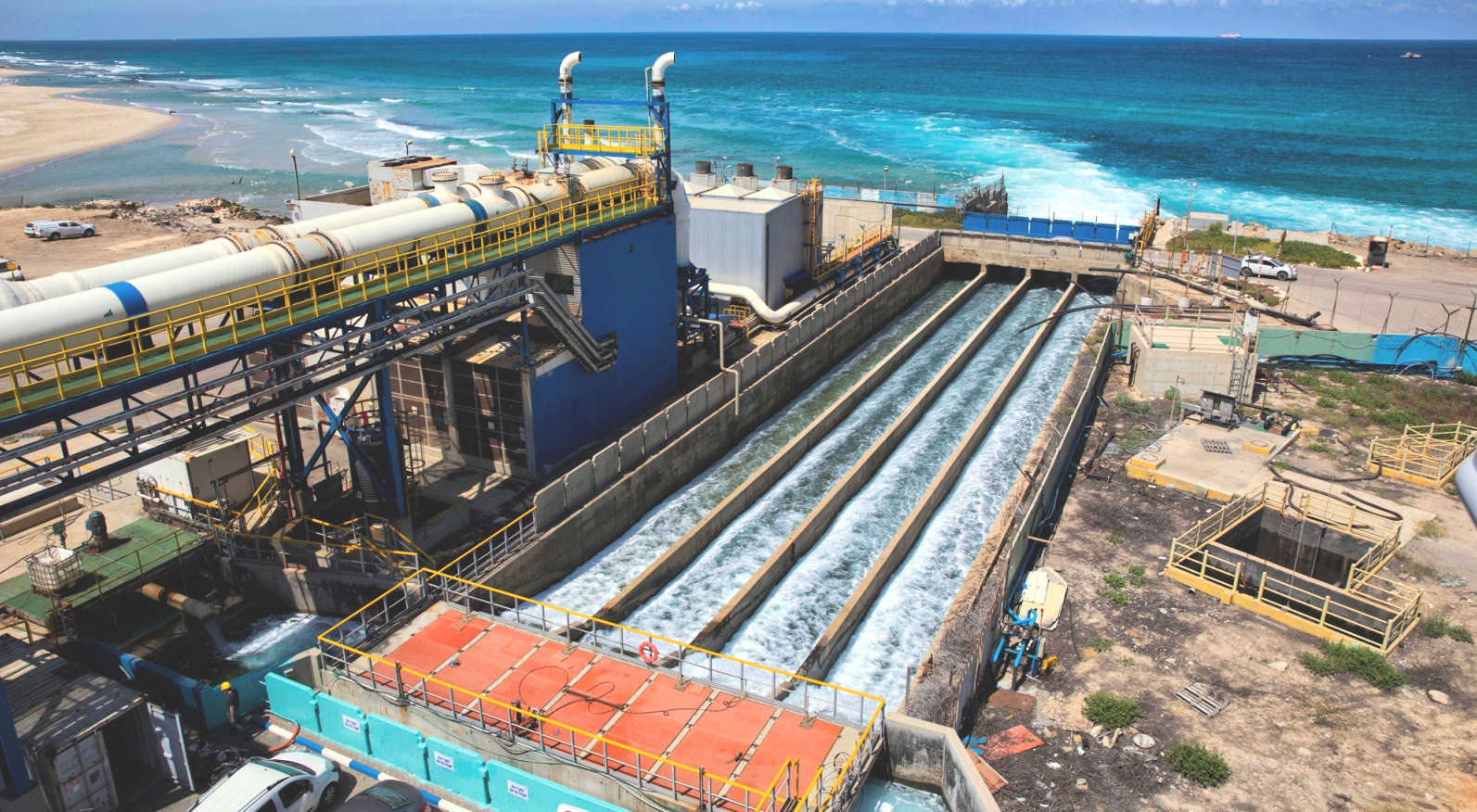
WATER
SECURITY - A study published by United Nations’ water researchers says there has been an “exponential increase” in global desalination capacity compared to 20 years ago — and a concomitant increase in the flow of polluted, hyper-salty brine water into the ocean.
The new research suggests that 40% of the world’s people face severe water scarcity already, and that this bleak situation will only get worse because of
human population
growth, development, inland water pollution and climate
change. By 2025, two-thirds of the world’s population may be facing water shortages. When waters run dry, people can’t get enough to drink, wash, or feed crops, and economic decline may occur.
WATER SCARCITY
Water Scarcity is the lack of sufficient available water resources to meet the demands of water usage within a
geographical region. It already affects every continent and around 2.8 billion people around the world at least one month out of every year. More than 1.2 billion people lack access to clean drinking water. The world has water but it doesn’t have the water in the
right places. It's a logistical and physical challenge, within the
confines of cost per litre.
Only 3% of the world’s water is fresh water, and two-thirds of that is tucked away in frozen glaciers or otherwise unavailable for our use.
70% of our planet is covered by oceans,
seas and river,
from which you probably think we have plenty - and yes - there is
plenty, but not potable.
Of
that we have about 1% available.
As a result, some 1.1 billion people worldwide lack access to water, and a total of 2.7 billion find water scarce for at least one month of the year. Inadequate sanitation is also a problem for 2.4 billion people—they are exposed to diseases, such as cholera and typhoid fever, and other water-borne illnesses. Two million people, mostly children, die each year from
diarrhea related diseases alone.
Many of the water systems that keep ecosystems thriving and feed a
growing human population have become stressed. Rivers, lakes and aquifers are drying up or becoming too polluted to use. More than half the world’s wetlands have disappeared.
Agriculture consumes more water than any other source and wastes much of that through inefficiencies. Climate change is altering patterns of weather and water around the world, causing shortages and droughts in some areas and floods in others.
At the current consumption rate, this situation will only get worse. By 2025, two-thirds of the world’s population may face water shortages. And ecosystems around the world will suffer even more.
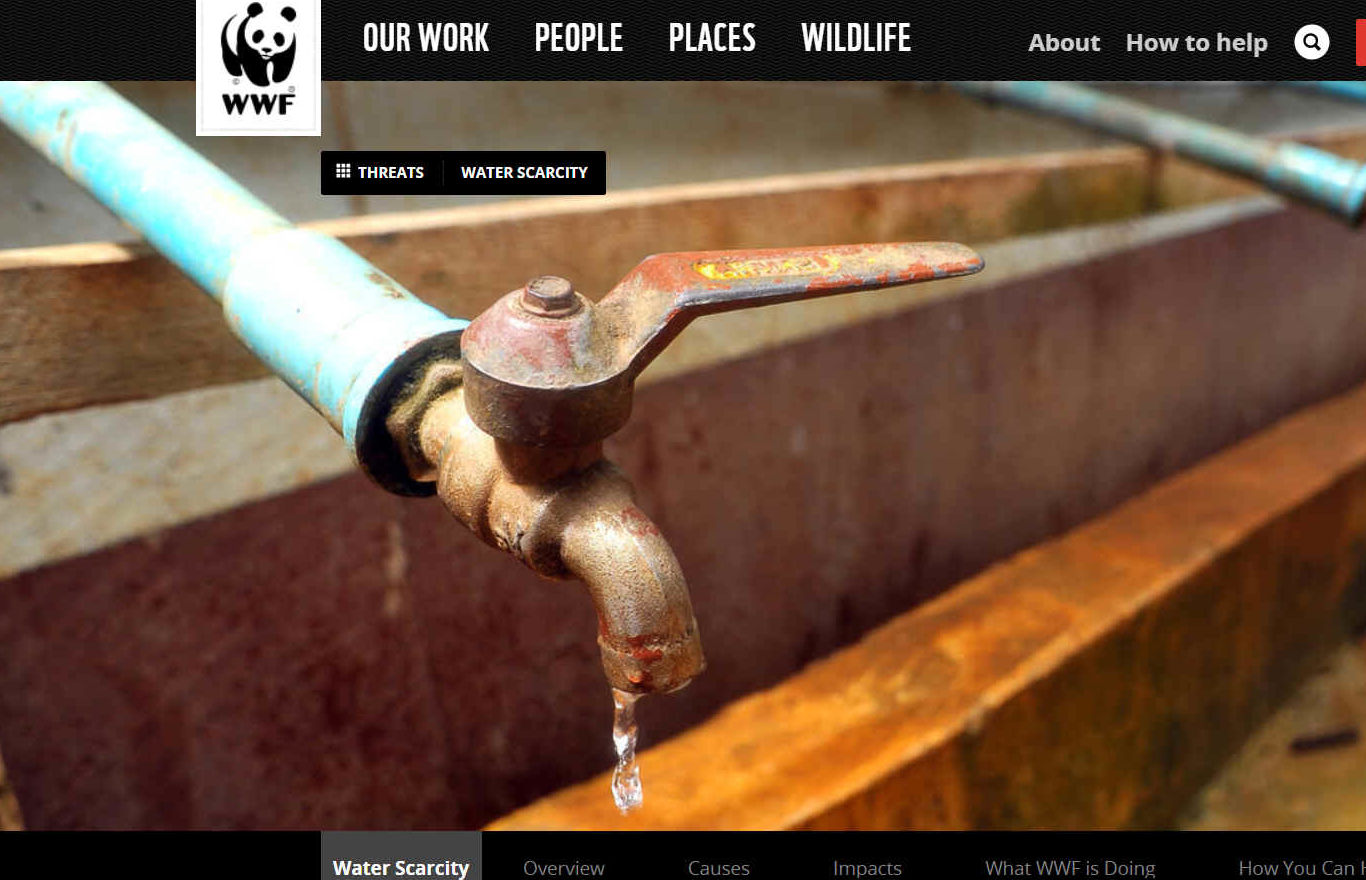
AQUEDUCTS -
The human population has successfully harnessed many of the world’s natural waterways—building dams, water wells, vast irrigation systems and other structures that have allowed civilizations to grow and thrive. But water systems are increasingly stressed, and some rivers, lakes and aquifers are drying up.
The Romans gave us aqueducts, though Archimedes invented the irrigation
screw, to raise water for farming.
WATER
MANAGEMENT
The importance of ensuring that water is well-managed is a high priority
in sustainable terms. Using more energy than is needed to produce
(potable) drinking water, and water for irrigation is irresponsible in climate
terms.
Sadly,
as we make more deserts, the useful land for planting trees reduces, so
adding to recovery problems for conservation engineers. We need trees to
offset our carbon output. But trees need water too.
POLLUTION
Water pollution comes from many sources including pesticides and fertilizers that wash away from farms, untreated human wastewater, and industrial waste. Even groundwater is not safe from pollution, as many pollutants can leach into underground aquifers. Some effects are immediate, as when harmful bacteria from
human waste contaminate water and make it unfit to drink or swim in. In other
instances - such as toxic substances from industrial processes - it may take years to build up in the environment and food chain before their effects are fully recognized.
AGRICULTURE
Agriculture uses 70% of the world’s accessible freshwater, but some 60% of this is wasted due to leaky irrigation systems, inefficient application methods as well as the cultivation of crops that are too thirsty for the environment in which they are grown. This wasteful use of water is drying out rivers, lakes and underground aquifers. Many countries that produce large amounts of
food - including India, China, Australia, Spain and the United
States - have reached or are close to reaching their water resource limits. Added to these thirsty crops are the fact that agriculture also generates considerable freshwater pollution – both through fertilizers as well as pesticides – all of which affect both humans and other species.
POPULATION GROWTH
In the last 50 years, the human population has more than doubled. This rapid
growth - with its accompanying economic development and
industrialization - has transformed water ecosystems around the world and resulted in a massive loss of biodiversity. Today, 41% of the world’s population lives in river basins that are under water stress. Concern about water availability grows as freshwater use continues at unsustainable levels. Furthermore, these new faces also need food, shelter, and clothing, thus resulting in additional pressure on freshwater through the production of commodities and energy.
POTABLE WATER
“Potable water” simply means water that is safe to drink, and it is becoming scarcer in the world. Increasing use is stressing freshwater resources worldwide, and a seemingly endless list of contaminants can turn once potable water into a health hazard or simply make it unacceptable aesthetically.
Of the more than 2 billion people who lack potable water at home, 844 million don’t have even basic drinking water service, including 263 million who must travel 30 minutes per trip to collect water. About 159 million drink untreated surface water. Unsafe drinking water is a major cause of diarrheal disease, which kills about 800,000 children under the age of 5 a year, usually in developing countries, but 90 countries are expected to fail to reach the goal of universal coverage by 2030.
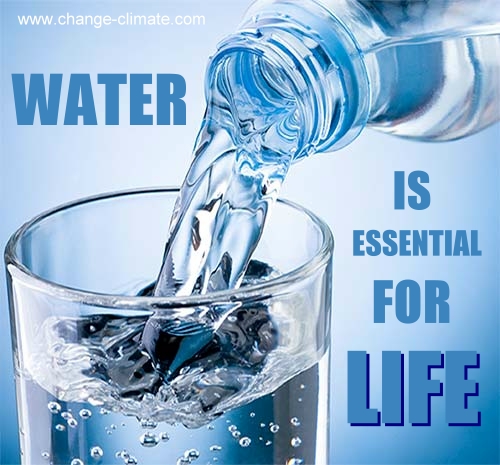
HOW DO WE CLASSIFY WATER AS SAFE TO DRINK?
The World Health Organization (WHO) organizes potable water contamination as organic, inorganic, radiological, and microbiological, and includes measures of acceptability of taste, smell, and
appearance:
1. Organic contaminants are carbon-based chemicals, including solvents and pesticides, which are introduced through agricultural runoff or industrial discharge. They can be responsible for a range of severe health problems from cancer to endocrine function disruption.
2. Radiological threats include radon, cesium, plutonium and
uranium. In North America, radon is the leading cause of
lung cancer in nonsmokers and the leading environmental cause of cancer mortality overall.
3. Inorganic pollutants, such as mineral acids, inorganic salts, metals, cyanides, and sulfates, persist in the environment. Heavy metals can cause neurological problems in
humans, especially in the unborn and children, and also bio-accumulate in some foods. Arsenic can cause cancer, skin lesions, cardiovascular disease, diabetes, and cognitive impairment. Algal blooms from nutrients like phosphorus and nitrogen can also introduce cyanotoxins to drinking water as well.
4. Waterborne pathogens including bacteria, viruses, protozoa, and parasites are usually introduced to water via feces and can cause a range of illness from mild gastroenteritis to potentially fatal diarrhea, dysentery, hepatitis, typhoid fever, cholera, and cryptosporidiosis. Millions are also infected with waterborne tropical diseases that include trachoma, the most common cause of preventable blindness.
WATER
IS NECESSARY FOR GOOD HEALTH
did you know water makes up 90 percent of brain weight. It also makes up 60 percent of your body weight. Adequate hydration is essential for your body to function properly, so drink more.
Here are five good reasons water is important to your health:
1. It helps weight loss. Water helps you feel full longer, without adding any additional calories. Drinking it or eating foods with a high water content can be a big help in managing your weight
2. It aids in digestion. It aids in constipation and other abdominal issues, especially those suffering from irritable bowel syndrome. It helps to move the digestive process along and through the system.
3. It boots energy. It delivers important nutrients to all of our cells, especially muscle cells, postponing muscle fatigue
4. It hydrates skin. Forget expensive creams and cure-alls, water is the best defense against aging and wrinkles in the skin.
5. It detoxifies. Moves toxins through your system faster, and optimizes kidney function. Inadequate hydration means inadequate kidney function.
The guideline recommended amount is eight glasses per day, though this varies from person to person. Those who exercise regularly, work outside, or have chronic medical conditions should consume more hydration to compensate for more water loss.
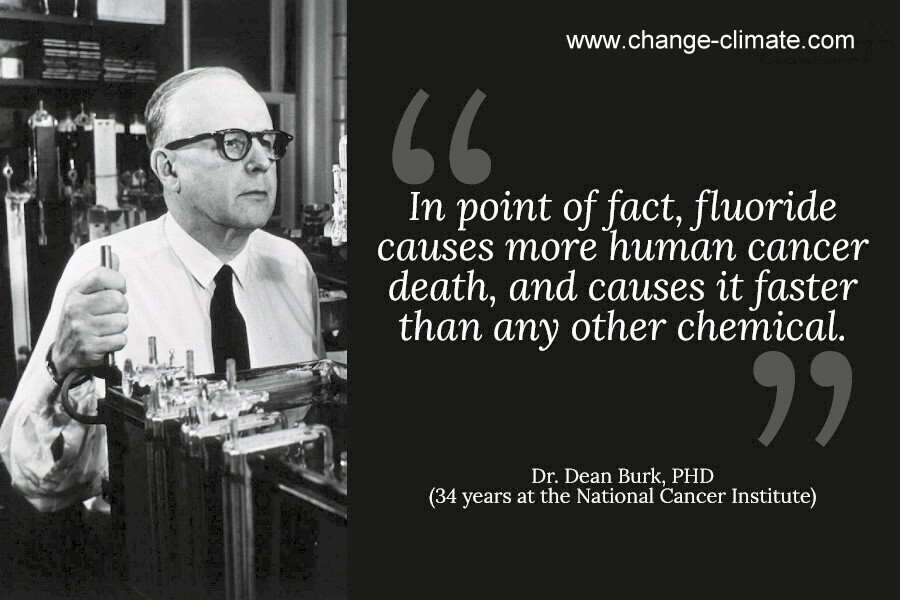
WATER TOXINS IN MUNICIPAL SUPPLIES
Chemical toxins are present in all aspects of human life in the 21st century. Clean, pure water is one of the greatest natural resources in the world. Every metabolic function depends upon the presence of water. Cities are built around abundant supplies of water. There are many industrial toxins present in our municipal water sources that must be avoided.
Here are a few we all need to be aware of and take measures to avoid to reduce your exposure to these toxins.
ARSENIC:
This is a powerful cancer causing agent. In 2001, the EPA lowered the maximum level permitted in drinking water from 50 ug/L to 10 ug/L due to the well-established carcinogenic risk. The Natural Resources Defense Council estimates that as many as 56 million Americans living in 25 states drink water with unsafe arsenic levels.
ALUMINIUM:
This toxic heavy metal is linked with neurological, gastrointestinal and liver damage. Most city water has elevated levels of aluminum. Aluminum competes with calcium for skeletal absorption but does not mimic calcium’s effects in the body. High aluminum reduces skeletal mineralization.
It also retards the absorption of phosphorus, zinc, & selenium. Zinc and selenium are key immune system modulators. Aluminum causes deficiencies in these critical minerals and malcoordinates the immune system.
FLOURIDE:
This halogen molecule is a highly potent free radical in the body that damages neurological tissue, injures the immune system and hampers thyroid function among many other problems.
In a 2006 report by the National Research Council of the National Academies it states, “Fluoride is an endocrine disruptor in the broad sense of altering normal endocrine function.” It is important to reduce your exposure to fluoride and the other chemical toxins in typical tap water.
CHLORINE:
This is used to sterilize the water and rightfully so as many infectious diseases can be attained through contaminated water. Natural springs should never be sterilized but city water absolutely should be.
Unfortunately, when chlorine is not filtered out of the water and is instead consumed in tap water it destroys the natural microflora throughout the body. This adversely affects natural immunity and dramatically increases the risk for immune disorders and cancer.
One of the most dangerous forms of chlorine includes chlorine vapors and chloroform gas. The FDA and other US government agencies have reported that most homes in the US have measurable levels of chloroform gas. This seeps out of toilet bowls, dishwashers, showers, etc.
These vapors dramatically increase the risk of asthma, airway inflammation and respiratory allergies. Chloroform gas is known to cause acute dizziness, nausea and fatigue.
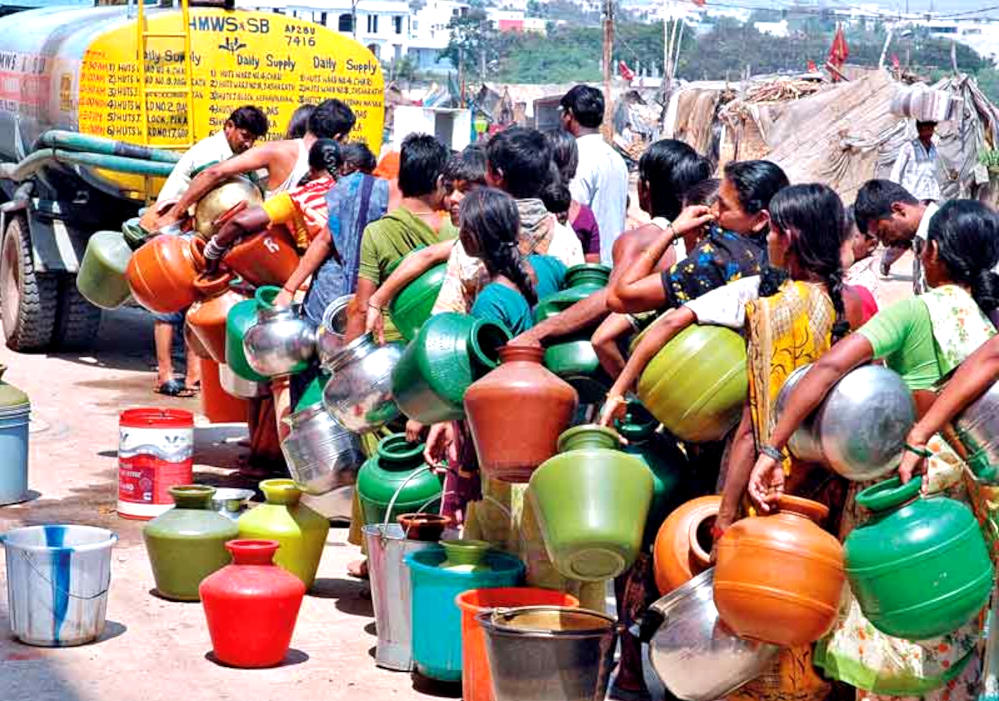
DESALINATION
Climate
change contributing desalination is most common in the Middle East and
California where:
- rainfall is low
- the countries have coastlines
- the countries have access to cheap oil for energy
- the locations are wealthy enough to squander energy
The cost of desalination is about double that of water obtained from building a new reservoir or recycling wastewater, according to a 2013 study from the state Department of Water
Resources. This plant will provide about 7 % of the water needed for San Diego and its surrounding area. They have more than 16
plants in the works to provide water for California. That should answer your question of whether Desalinization is the solution for coastal regions with growing populations.
It is a rich quick fix, adding to the problem of global
warming. Rather than deal with the underlying issues. But the energy
gobbled up for processing is adding to climate change. Unless, they are
using solar and wind
power.
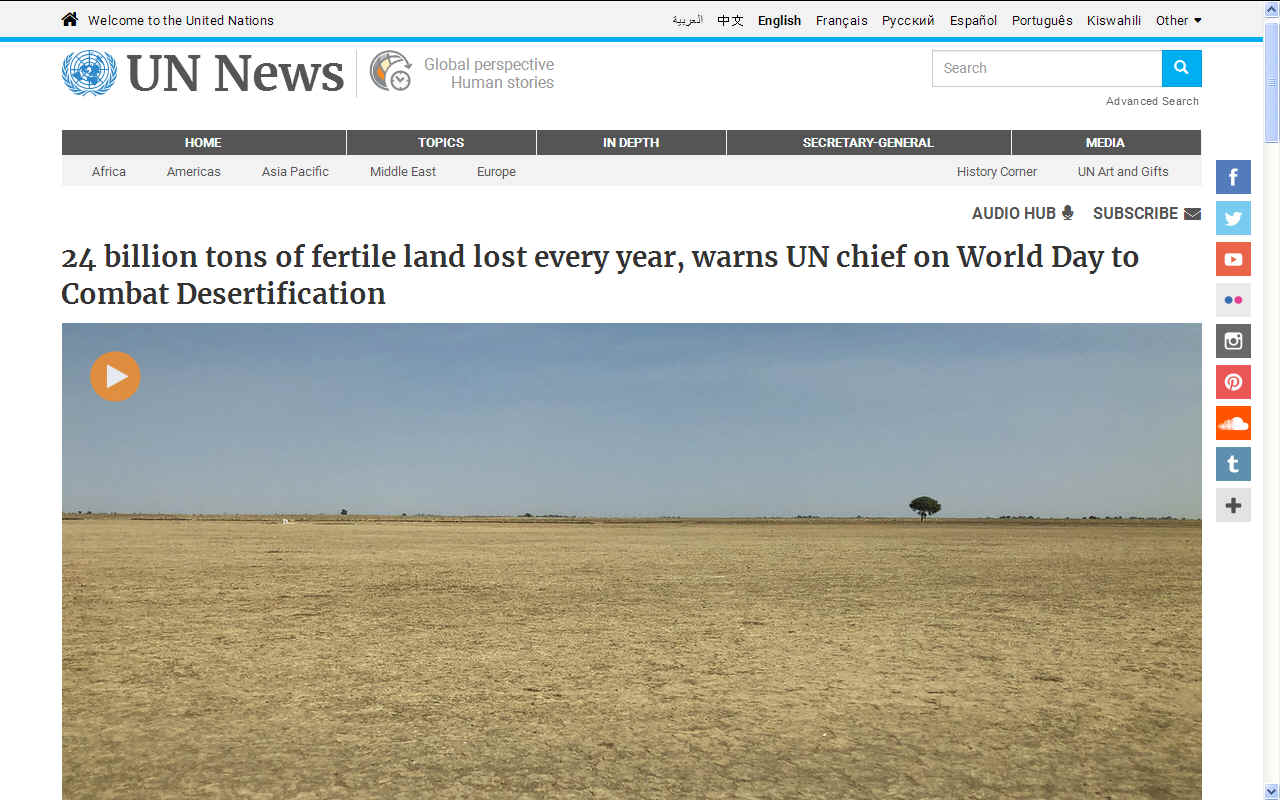
DESERTS
ARE INCREASING - “Desertification, land degradation and drought are major threats affecting millions of people worldwide,” said the UN chief, “particularly women and children.”
Mr. Guterres said that it is time to “urgently” change such trends, adding that protecting and restoring land can “reduce forced migration, improve food security and spur economic growth”, as well as helping to address the “global climate emergency”.
But desalination is adding to the problem of desertification, where kleptocratic
administrations keep empire building. Silly billies!
| ____ |
__ |
 |
LINKS
& REFERENCE
1. Tchounwou PB, Patlolla AK, Centeno JA. Carcinogenic and systemic health effects associated with arsenic exposure–a critical review. Toxicol Pathol. 2003 Nov-Dec;31(6):575-88. PMID: 14585726
2. Tchounwou PB, Centeno JA, Patlolla AK. Arsenic toxicity, mutagenesis, and carcinogenesis–a health risk assessment and management approach. Mol Cell Biochem. 2004 Jan;255(1-2):47-55. PMID: 14971645
3. NRDC – Executive Summary and Recommendations Findings
4. Krewski D, Yokel RA, Nieboer E, et al. HUMAN HEALTH RISK ASSESSMENT FOR ALUMINIUM, ALUMINIUM OXIDE, AND ALUMINIUM HYDROXIDE. Journal of toxicology and environmental health Part B, Critical reviews. 2007;10(Suppl 1):1-269.
5. Fewtrell MS, Bishop NJ, Edmonds CJ, Isaacs EB, Lucas A. Aluminum exposure from parenteral nutrition in preterm infants: bone health at 15-year follow-up. Pediatrics. 2009 Nov;124(5):1372-9. PMID: 19858156
6. Mailloux RJ, Lemire J, Appanna VD. Hepatic response to aluminum toxicity: dyslipidemia and liver diseases. Exp Cell Res. 2011 Oct 1;317(16):2231-8. PMID: 21787768
7. Choi AL, Sun G, Zhang Y, Grandjean P. Developmental Fluoride Neurotoxicity: A Systematic Review and Meta-Analysis. Environmental Health Perspectives. 2012;120(10):1362-1368.
8. Wang H, Yang Z, Zhou B, Gao H, Yan X, Wang J. Fluoride-induced thyroid dysfunction in rats: roles of dietary protein and calcium level. Toxicol Ind Health. 2009 Feb;25(1):49-57. PMID: 19318504
9. Review of the 2006 United States National Research Council Report: Fluoride In Drinking Water.
10. Morris RD. Drinking water and cancer. Environmental Health Perspectives. 1995;103(Suppl 8):225-231.
11. Bureau of Environmental Health – Chloroform
12. Richardson SD, Plewa MJ, Wagner ED, Schoeny R, Demarini DM. Occurrence, genotoxicity, and carcinogenicity of regulated and emerging disinfection by-products in drinking water: a review and roadmap for research. Mutat Res. 2007 Nov-Dec;636(1-3):178-242. PMID: 17980649
13. Rodriguez-Mozaz S, Weinberg HS. Meeting Report: Pharmaceuticals in Water—An Interdisciplinary Approach to a Public Health Challenge. Environmental Health Perspectives. 2010;118(7):1016-1020.
14. Lubick N. Drugs in the Environment: Do Pharmaceutical Take-Back Programs Make a Difference? Environmental Health Perspectives. 2010;118(5):A210-A214.
http://www.nrdc.org/water/drinking/arsenic/exesum.asp
http://www.ncbi.nlm.nih.gov/pmc/articles/PMC2782734/
http://www.ncbi.nlm.nih.gov/pubmed/14585726
http://www.odh.ohio.gov/~/media/ODH/ASSETS/Files/eh/HAS/chloroform.ashx
https://mywaterearth.com/
http://www.nrdc.org/water/drinking/arsenic/exesum.asp
http://www.ncbi.nlm.nih.gov/pmc/articles/PMC2782734/
http://www.ncbi.nlm.nih.gov/pubmed/14585726
http://www.odh.ohio.gov/~/media/ODH/ASSETS/Files/eh/HAS/chloroform.ashx
https://mywaterearth.com/
https://sustainabledevelopment.un.org/
https://www.un.org/

See
our zero carbon A
- Z or
set cruise for HOME





